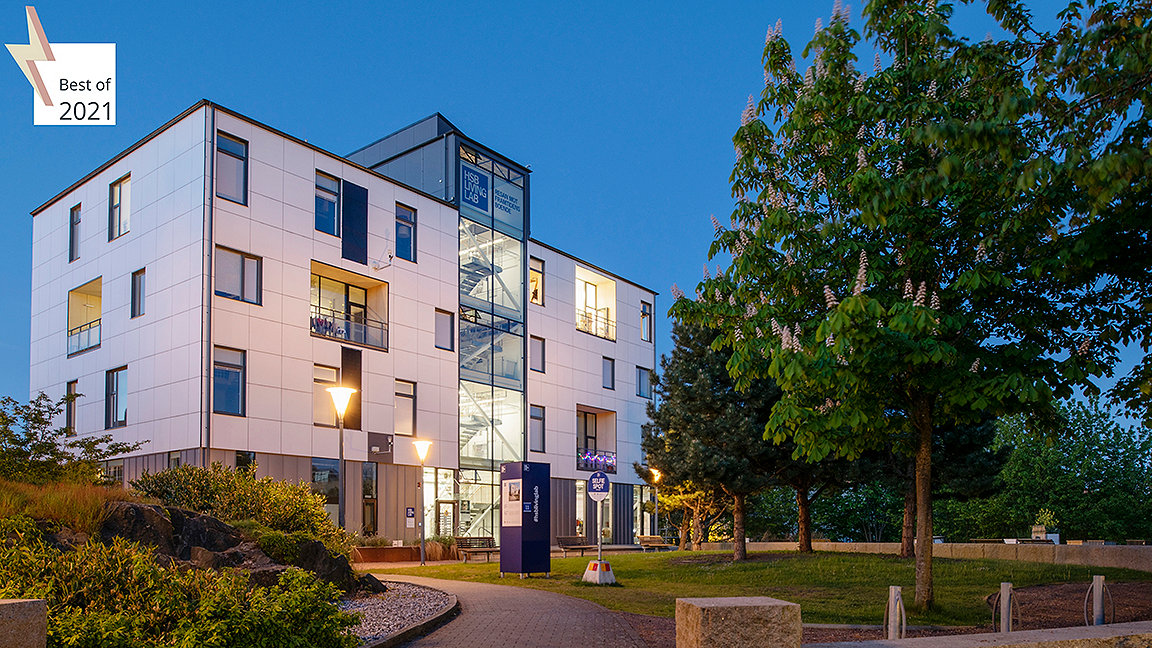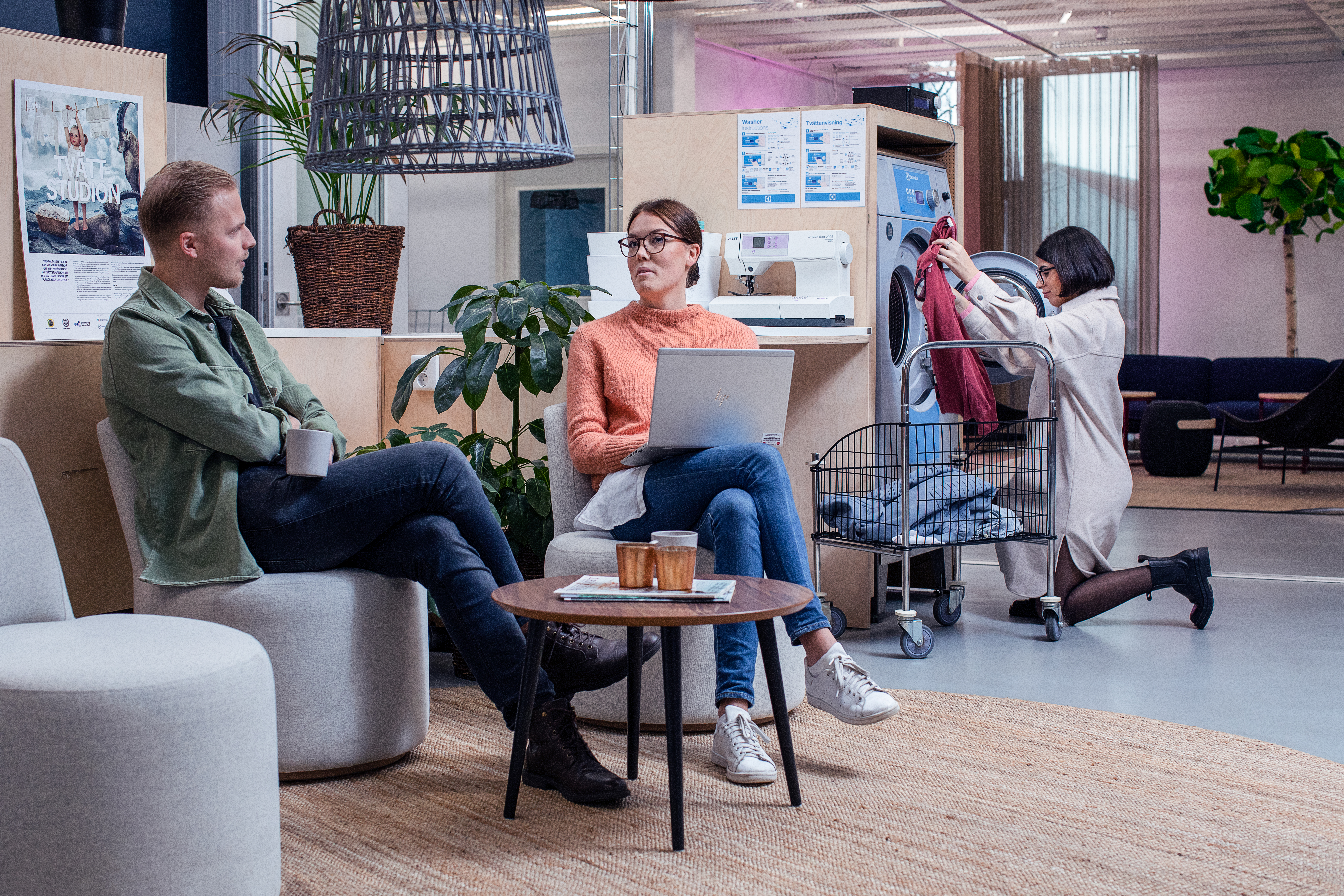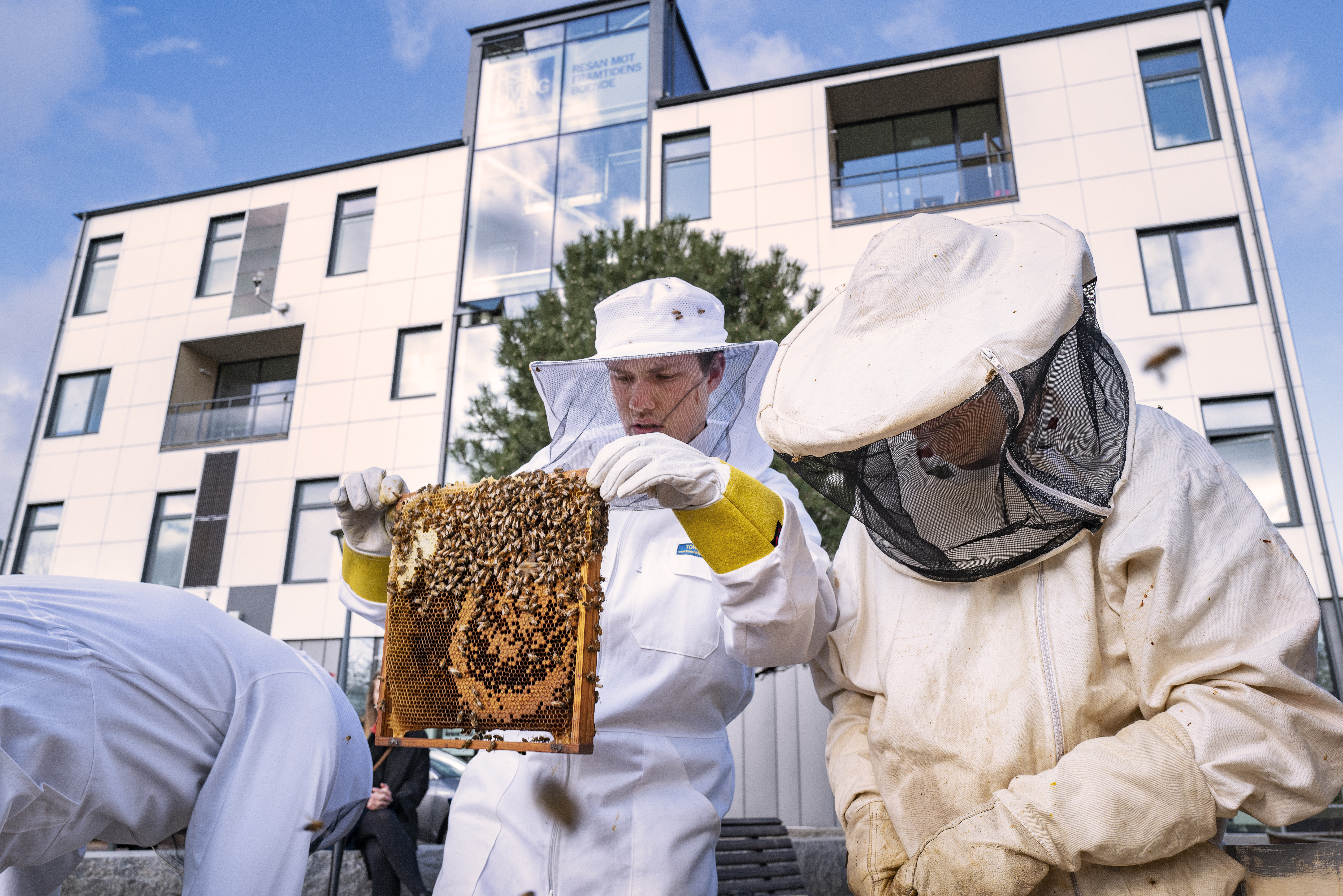
The Living Lab building © Ola Kjelbye
How will we live in the future? The Living Lab, developed by housing cooperative HSB is a research and demonstration facility in Gothenburg, Sweden, consisting of homes for students, HSB tenants and guest researchers, which aims to provide answers to this question.
The Living Lab building, situated on Chalmers Technical University campus at Johanneberg Science Park, was completed in June 2016, with the first students moving in that September.
It is made up of 44 prefabricated modules, which enable easy rearrangement of the layout to accommodate new experiments. It also has a transparent interior design that reveals some of the technology in use; this is part of the open innovation concept to make the lab accessible for researchers, developers and innovators.
Inside the Living Lab are 29 apartments, where almost 40 residents have their permanent homes. There are regular flats as well as co-living apartments that share common areas such as the kitchen and living room, allowing research on various types of household. The space-efficient apartments are cube-shaped, so with every side measuring 3.6m, each provides 47 cubic metres of space.
The number of residents and the high standard of living they enjoy make the Living Lab one of the most ambitious such schemes in the world.
The building’s infrastructure, which can be seen in this virtual tour, includes meeting rooms, a showroom for technology developed in the lab, a laundry, a share hub where tenants can borrow or lend items, a fix-it station for bikes, and 12 adaptable wall sections that can be removed and replaced to enable testing of various innovative facade materials and assembly techniques.
The building has an extensive sensor network providing precise measurements and data for research, development and innovation projects. More than 2,000 sensors are integrated into the building infrastructure, and these measure everything that goes on inside such as real-time temperature, water and energy consumption, movement, air quality, energy output and lighting use.
Shaping the future of housing
The aim of the Living Lab is to help shape the future of housing and optimise the interface between humans and technology. The measures developed there are tested by residents, which ensures they meet market needs, and will prove financially attractive and viable.
For instance, one measure first tested in the lab was provision of a social space where tenants could use shared items such as tools and a sewing machine. As a result, a washing lounge has been designed with a swap corner for items such as clothes, books and kitchen utensils in HSB brf Mariedahl, a new apartment building developed by the cooperative in Mölndal, just south of Gothenburg.
The Living Lab is also designed as a platform for collaboration. Everyone with an idea about sustainable housing is welcome to apply to carry out research and development there. More than 120 projects have started in the building, including those outlined in the box below.


Projects are being undertaken by parties as varied as researchers, students, developers, private businesses and the EU. HSB Living Lab is also a member of the European Network of Living Labs, which acts as a knowledge exchange.
At HSB Living Lab, the private and public sectors work together with academia to try out new ideas in a practical, physical environment. Partner organisations finance a research fund to which all projects using the lab can apply.
The Swedish National Board of Housing, Building and Planning is seeking to strengthen rules and regulations on energy efficiency. HSB has therefore recently run a project at the lab together with the technical consultancy company and HSB Living Lab partner Bengt Dahlgren AB looking how HSB can meet these proposed standards for underfloor heating in bathrooms.
We realise that if we continue to install underfloor heating in new houses using current methods, we can't obtain the Sweden Green Building Council certificates that are important for us as a sustainable brand. This project therefore aims to provide insights that will enable our real-estate team to find ways to comply with the new regulations.
Research from the Living Lab
Solar thermal windows
With a new type of molecular solar thermal window, sunlight can be absorbed and stored for release as heat during the night. In this way, the window helps cool the room during daytime and heat it later, without compromising transparency.
Partner: Chalmers Technical University
Digitalised beehives
To contribute to research into biodiversity conservation, this project connects beehives to the internet. Sensors and the Internet of Things help the team to collect data to better monitor the insects’ well-being. The concept was developed by TietoEVRY consultants after a visit to the Living Lab.
Partner: TietoEVRY
Fresh herbs from vertical farming
Thanks to an indoor, vertical hydroponic farming system, the residents of the lab can get fresh garden herbs all year round.
Partners: Green City Farming and Growpipes
District heating
A pipe feeds low-temperature return heat from the local district heating network into the Living Lab, ensuring the energy is used twice.
Partners: Bengt Dahlgren AB and Göteborg Energi
Grey water recovery
A circular water purification system recycles grey water from bathroom sinks, bathtubs, and showers for reuse as warm, clean water in the bathrooms. The grey water recycling system is being implemented in a new off-grid house in Jönköping, Sweden after local property development firm Vätterhem heard about the project.
Partners: Bengt Dahlgren AB, Chalmers Technical University and Graytec
Minimising microplastics
Our oceans are contaminated by microplastics coming from, among other things, washing clothes and fabrics made of acrylic, polyester and nylon. The MinShed project seeks to help the textile industry design clothes made of synthetic fabrics that won't release microplastics. In the washing machines at the Living Lab, special filters have been installed that capture microfibres and microplastics to enable investigation of the differences between textiles.
Partners: Electrolux Professional and Chalmers Technical University

Third-generation lab
HSB Living Lab is part of the third generation of living labs, being an environment where the residents participate in testing and developing innovative and sustainable technologies and behaviours.
Students and researchers of all ages and nationalities will live in the lab's apartments for ten years, while academics investigate innovative technology, sustainability measures, architecture and social interaction around the clock.
'The building will house and inspire the search for innovative architecture, with the need for flexibility, development and evaluation central to design,' says Peter Elfstrand, the architect behind HSB Living Lab.
The lab's residents are expected to participate both actively and passively in the projects in the building. Active participation includes testing and providing feedback on new products, technology or functions; but even passively, the way they live will help to inform sustainable innovation thanks to non-intrusive monitoring of their everyday activities.
'We can’t postpone sustainable transformation – we need to start taking action today. Our intention is to speed up the sharing of research findings and deploying new sustainable solutions into society,' says HSB Living Lab project manager Emma Sarin.
Jens Holmberg is head of PR and communications at HSB Living Lab
Related competencies include: Sustainability
